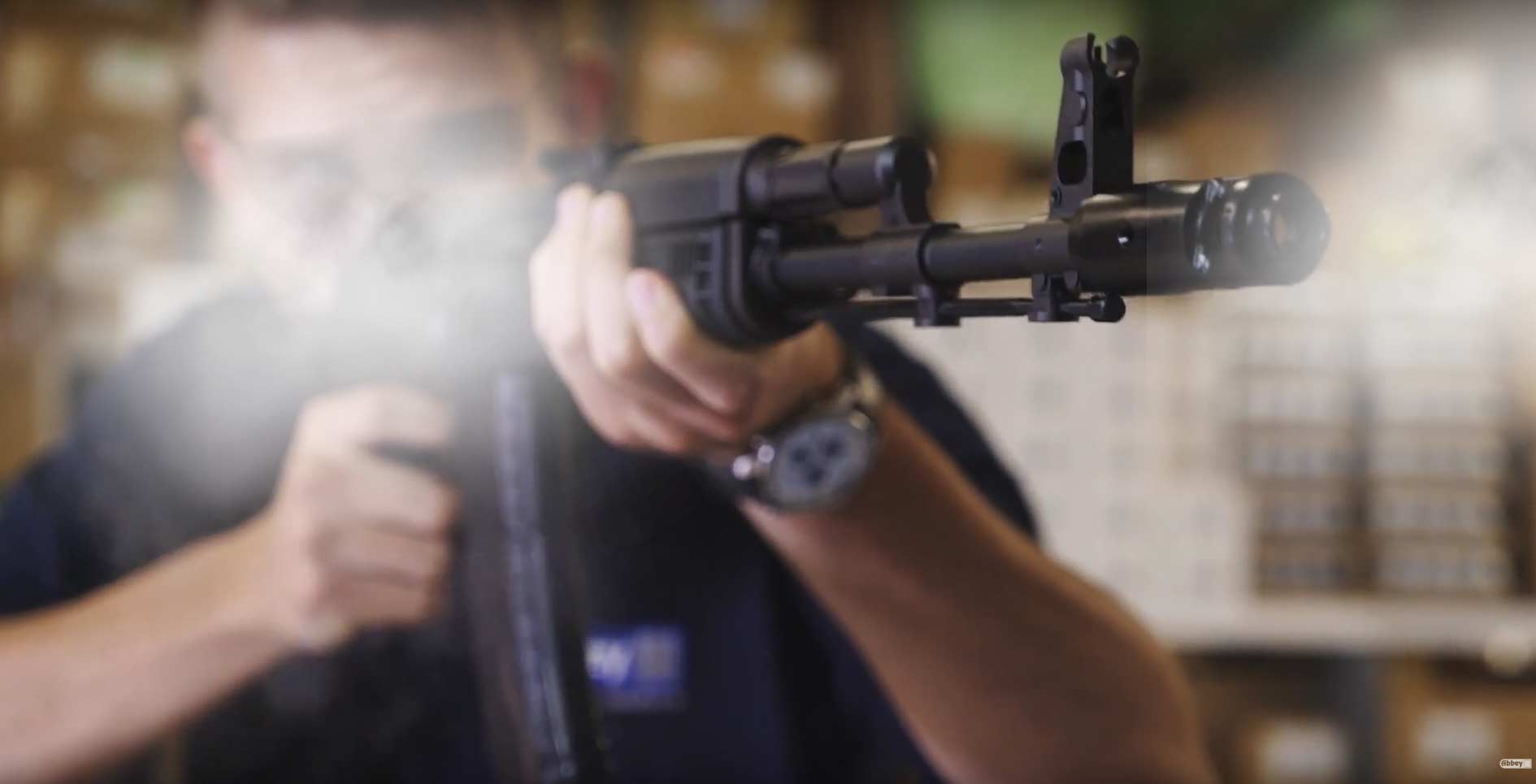
27th Apr 2018
How to Tune a Gas Airsoft Gun
Tuning your airsoft weapon is a huge part of the hobby. There’s nothing better than heading into a skirmish, excited to see what the previous week’s upgrades and tinkering has done to the performance of your weapon.
However, gas airsoft guns are some of the hardest, but most important weapons to tune. They can be less predictable than spring and electric weapons. In a sport where predictability and dependability are key, this is something you’ll want to tune.
So, how do you tune a Gas Airsoft Gun? How do you get the most out of the gas you put into it?
First things first, improving gas efficiency.
1.Improve Gas Seals
Gas efficiency is one of the most important things in a gas airsoft gun. There’s not a lot in airsoft more frustrating than running out of gas halfway through a game and having to trudge back to the carpark to re-fuel.
The first step in doing this is to reduce any and all opportunities for the gas to escape on the journey from magazine to barrel.
This primarily happens in 2 places: Between the Gas router (the rubber at top of the magazine) and the loading nozzle; and between the loading nozzle and the hop-up chamber.
The gas seal between the gas router and the loading nozzle can be improved with an air seal improving gas router. These gas routers are slightly taller than stock, so they push harder against the loading nozzle and reduce gas leaks. Maintain a strong seal on this surface with some Silicone Grease.
The seal between the loading nozzle and hop-up is a little harder to keep shut tight. The hop-up seals against the outside of the loading nozzle, so the hop-up rubber thickness and the inner bore of the hop-up affect this seal. Look into purchasing a hop-up with a better air seal, a hop-up rubber designed for gas efficiency or some DIY methods are available. DIY methods include wrapping the outer of the hop-up rubber/bucking with PTFE tape, to cause a tighter seal.
2.Reduce Mass
This one may not be up your street, but we’ve included it because it will improve the performance of your gas gun. The back that reciprocates back and forth when shooting is what gives you that recoil when you shoot (in an airsoft gun, that is).
When the gun fires, it must move this weight back and forth, this takes energy and this energy comes from the gas in your magazine. The more weight, the more gas is required. Therefore, the less weight, the less gas is required. By reducing the weight of the bolt, you can improve your gas efficiency and get more shots out of one magazine.
However, (and this is why it may not be up your street) this will reduce the recoil you feel when you shoot. It’s down to you whether this is a worthwhile trade off to you. As an additional benefit of reducing recoil, you’ll also improve the handling of your gas gun. You’ll find it’s easier to maintain accuracy during sustained fire.
3.Reduce movement
Similarly, to reduce the amount of weight in the bolt, which the gas then has to move, you can reduce the distance that the gas has to move the bolt.
Most gas airsoft guns don’t need the full travel of the bolt to operate. This full travel is only included to maintain the realism of the replica. Again, if you’re a die-hard realism fan, this approach may not be for you.
Take your gas gun and move the bolt slowly backward. As you pull it back, the loading nozzle will disengage from the hop-up, move back past the magazine and the bolt will reset the trigger and hammer. These are the only key parts of the operation and any movement further back from this is wasted energy (but also really cool looking realism).
You’re able to put a stopper in the way of the bolt which causes the bolt to return much sooner than stock. This not only reduces gas consumption but also has the added benefit of increasing the rate of fire and limiting the forces transferred into the receiver of the body. However, as mentioned, this will reduce the travel of the bolt, taking away from the realism of the replica and the recoil felt.
4.Reduce Wobble
A gas airsoft gun goes through much more shaking than your standard spring or electric airsoft gun. In order to maintain accuracy whilst laying down fire, you want to ensure that your airsoft gun is as sturdy as possible.
Battening down the hatches of your airsoft gun isn’t just about tightening up the bolts and screws on the receiver, it’s about removing any potential “play”.
Common places are:
Between inner barrel and outer barrel. On gas rifles there’s a little movement between the inner barrel and the outer barrel. This play can introduce inaccuracy during firing (This movement is by design in most gas pistols, so this won’t help you). A few layers of electrical tape around the outside of the barrel will firm-up the connection between the two and reduce wobble.
In the magazine. If the magazine doesn’t fit snuggly into the mag well, you’ll want to remove this movement. Any movement could introduce a gas leak between the magazine’s gas router and the loading nozzle and produce inconsistent fps.
5.Stress Test
Most people, when tuning and testing their weapons, they may fire a few rounds down range and call it good. However, rarely is this the way in which you play airsoft.
There’s one key factor which changes here which will affect your gas airsoft gun. Temperature.
Since when you test your rifle, you’re unlikely to get up at 9am, when you play, the temperature is often vastly different to when you test. Furthermore, when you play, you fire much more aggressively than when you’re testing.
What does the way you shoot have to do with temperature? Well, as you shoot, you cause the gas stored in your rifle to expand. This expansion of gas causes a cool down effect (like how deoderate is cool when you spray it). This cold gets dissipated into the body of the airsoft gun. However, material properties change with temperature and material can get harder and more brittle at lower temperatures, particularly rubber.
Since the hop-up rubber is in the path of this rapidly expanding gas, it gets really cold. The longer you shoot, the colder it gets and the harder the rubber turns. This means that the hardness rating of your hop-up rubber also changes as you shoot. This causes the amount of hop-up applied to the BB to change, as the temperature goes up and down.
Fixing this is about testing and stress testing different hop-up rubbers (and nub combinations) in the conditions that you will be using it in, until you find a kind that works perfectly with your play-style. Gas guns, unless being used in rather hot climates, should use a hop-up rubber specifically designed for very cold conditions, to ensure they do not go brittle and tear during operation.
